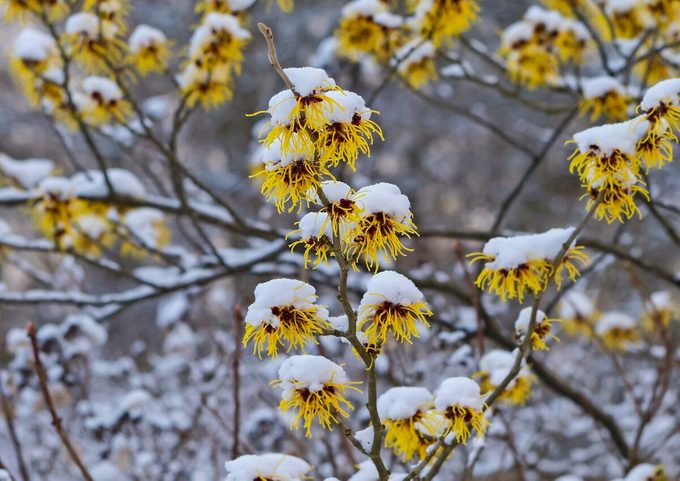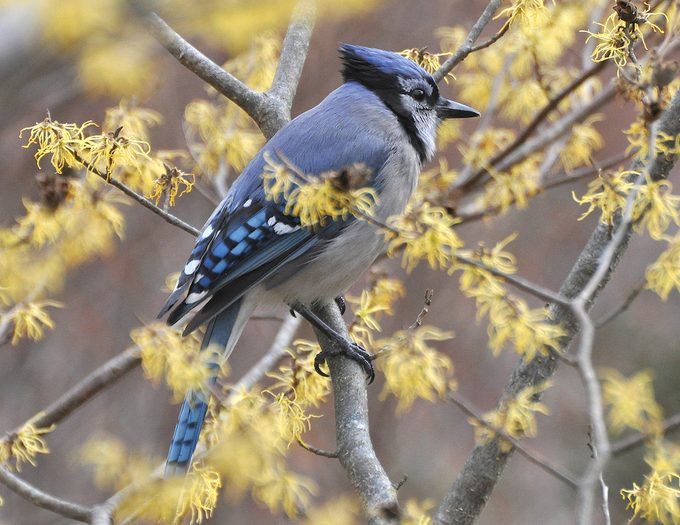Witch hazel plant brightens up the landscape with colorful flowers and foliage. Here's how to add this eye-catching shrub to your backyard.

Witch Hazel Plant Care and Growing Tips

On This Page
How to Grow a Witch Hazel Plant
![Hamamelis Vernalis [witch Hazel]](https://f-cce-5891-dev.bnb.r.tmbi.com/wp-content/uploads/2025/05/GettyImages-1203934486.jpg?fit=680%2C995)
Growing zones: 3 to 9
Light needs: Full to part shade
Grown for: Showy, fragrant flowers that provide colorful winter interest
Foliage: Gray-green leaves that turn yellow-orange in cool weather
Cultivars to try: Common witch hazel blooms in fall; Chinese and Japanese varieties flower in late winter.
These deciduous shrubs grow best in full sun to part shade. They generally produce more blooms when planted in the sun.
Witch hazels are undemanding, tough, and tolerate a variety of climates. They also tolerate most soils, although they prefer moist soils for optimum growth.
When Do Witch Hazels Bloom?

Witch hazel plant — also known as witchhazel, or witch-hazel — brings a welcome pop of yellow at winter’s end. Spring-flowering types explode with fragrant, spiderlike flowers in yellow, copper or red as early as January, while common witch hazel blooms from September through November.
Pests and Diseases
Witch hazel has no known serious disease issues, although gardeners might want to look out for Japanese beetles and powdery mildew. Deer typically leave it alone.
Benefits of Growing Witch Hazel

Many gardeners appreciate the color witch hazel plant brings to their yards, especially at a time when few other flowers or shrubs are blooming. Blooms on some varieties exude a spicy fragrance, although those interested in growing the Chinese or Japanese varieties should note that they do not have a scent.
Also, be patient. Native common witch hazel plants, also known as American witch hazel, (Hamamelis virginiana) do not begin flowering until they are six years old.
In addition, birds snack on witch hazel seeds, which look like small brown capsules, in early spring. Look for pollinators on the flowers, too; it is a host plant for several types of moths and butterflies. Some birds also use the shrub for nesting, or as a means of taking shelter from predators.
Their gray-green leaves turn yellow-orange in cool weather, which provides incredible fall color.
RELATED:
- 20 Pretty Plants for Winter Cheer
- Top 10 Early Spring Flowering Bushes
- The Prettiest Yellow Flowering Shrubs for Your Yard
Sources
- Arbor Day Foundation, “Witchhazel“
- U.S. Forest Service, “American Witchhazel“
- North Carolina Extension Gardener Plant Toolbox, “Hamamelis virginiana (Common witchhazel)”
- The Morton Arboretum, “Common witch-hazel“





















